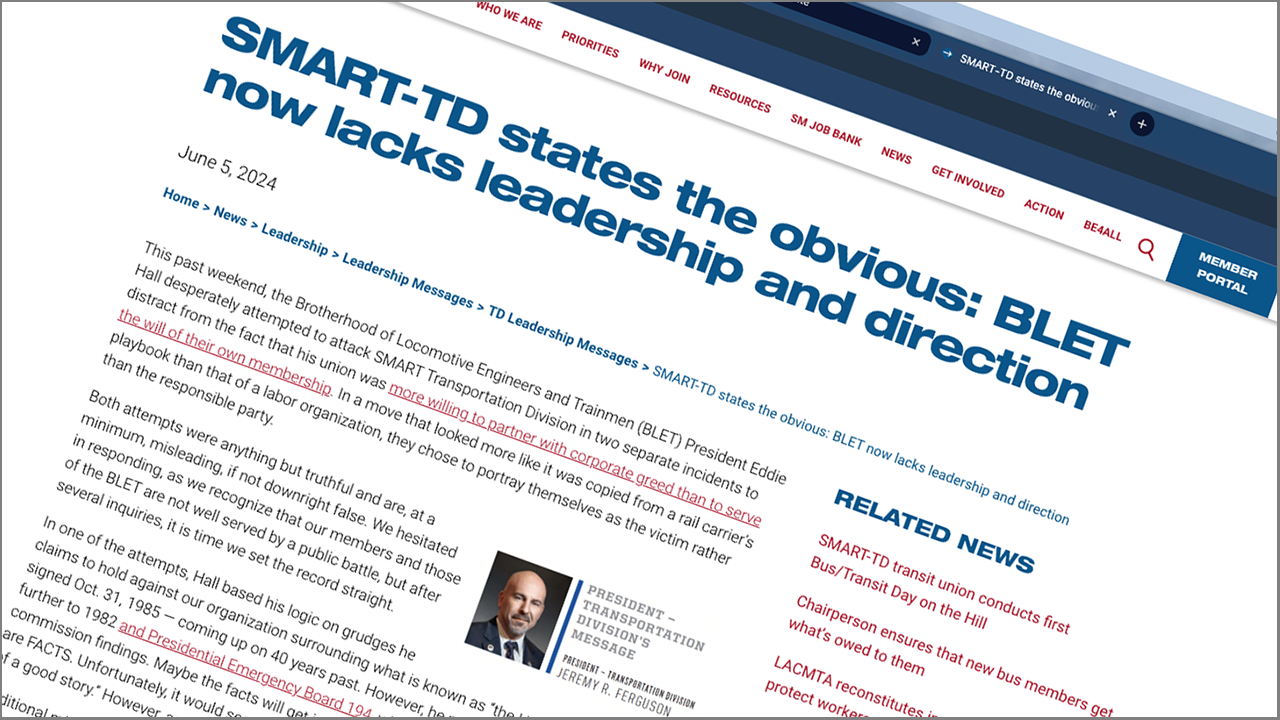Whose Interests Do BLET and SMART-TD Serve?

This story was published in the July 2024 issue of Railway Age. Below is a brief summary of the article — click here for the full story.
The Brotherhood of Locomotive Engineers and Trainmen (BLET) and the Transportation Division of the International Association of Sheet Metal, Air, Rail and Transportation Workers (SMART-TD) are again locked in combat, alleging a litany of grievances. The underlying cause for each to leap at the other’s jugulars are declining numbers of dues-paying conductors and engineers as new technology has allowed Class I railroads to improve productivity and efficiency while slashing total employment from 458,000 in 1980 to under 116,000 today.
Exacerbating tensions is a blurring of once bright craft demarcation lines that assured representation of conductors by SMART-TD, and engineers by BLET. Collective bargaining agreements now provide for an ebb-and-flow of train crews across craft lines, creating for both unions a temptation to poach the other’s members as either may represent those sharing the locomotive cab. If this appears counter to the responsibility of labor unions to protect member jobs, consider that three parties sit at the negotiating table—rail management, and labor unions wearing two hats. Economic theory holds that self-interest is paramount when the choice is between a union’s financial security and its members’ job security.
As with railroads that unified in search of greater efficiency, rail labor organizations recognize their own mergers can be a financial lifeline. For BLET and SMART-TD, when marriage failed to occur, the fallback strategy was plunder. Before SMART-TD predecessor UTU consolidated with SMWIA, and BLE with the Teamsters, the two failed at six merger attempts that would have produced substantial cost savings and better situated the unified BLE and UTU to fend off a race-to-the bottom as railroads played one against the other.
The greatest of rail labor leaders, Eugene V. Debs, wrote in 1893: “What can labor do for itself? The answer is not difficult. Labor can organize, it can unify, it can consolidate its forces. This done, it can demand and command.”